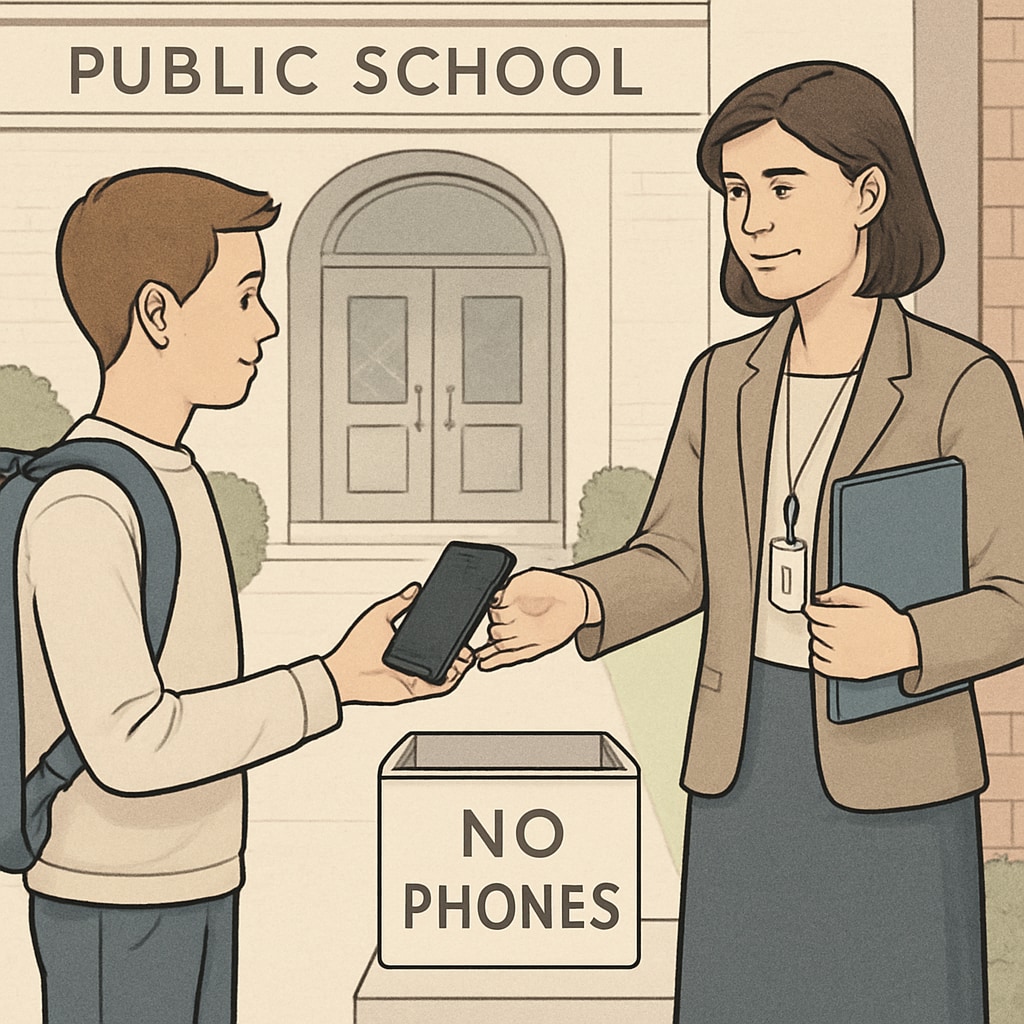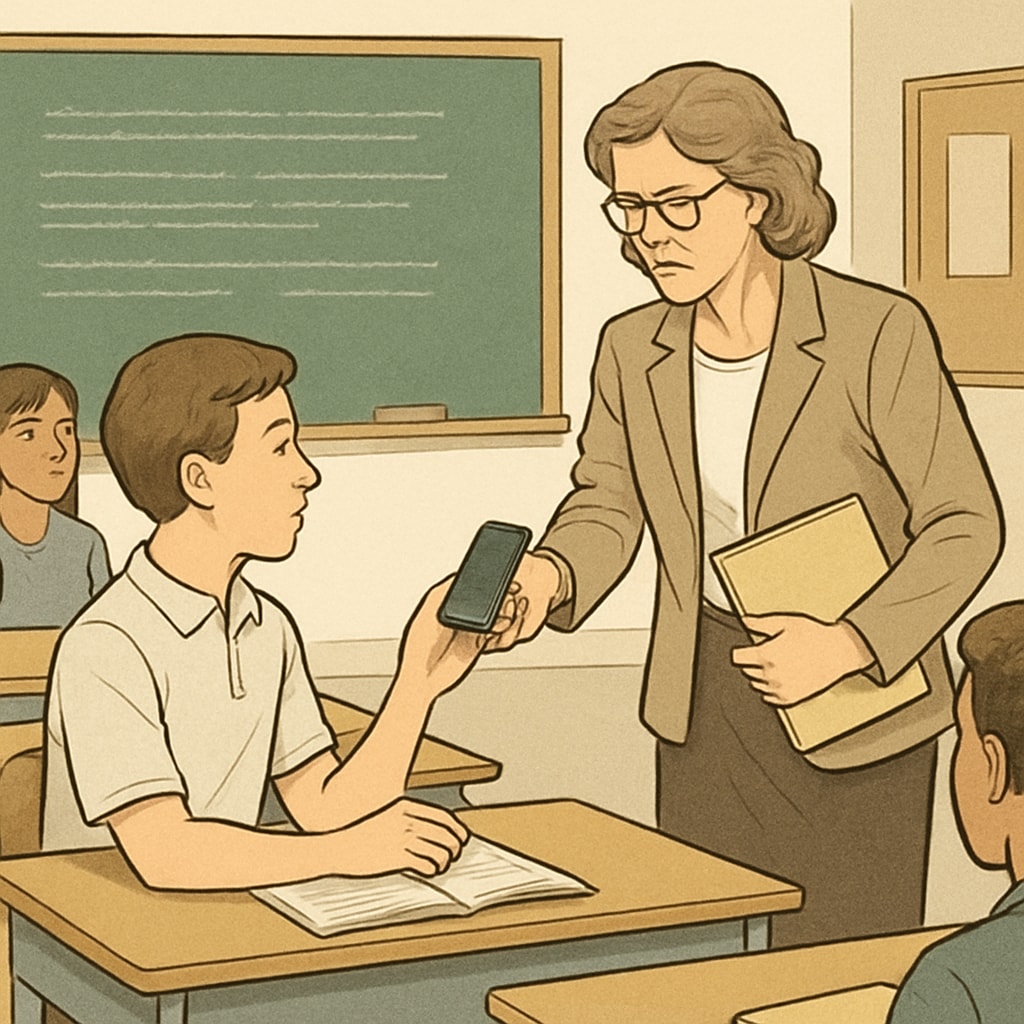In recent years, phone bans have become a growing trend in public schools as educators and policymakers attempt to curb the distractions caused by smartphones. These “screen-free zones” aim to promote focus, improve social interactions, and enhance classroom engagement. However, the implementation of these policies has sparked debates about their effectiveness and impact on students, especially when comparing public schools to their private counterparts. This article delves into the educational rationale behind phone bans, examines their real-world challenges, and highlights the differences in enforcement between public and private schools.

The Educational Case for Phone Bans
Advocates of phone bans argue that smartphones are one of the primary distractions in modern classrooms. Research shows that excessive phone use can disrupt attention spans, reduce academic performance, and hinder meaningful face-to-face interactions among students. By removing phones from the equation, public schools aim to create an environment where learning takes precedence.
In addition, phone bans are often linked to improved mental health. Social media, accessible via smartphones, has been associated with increased anxiety, cyberbullying, and peer pressure among young people. Limiting access during school hours can provide students with a reprieve from these external pressures, fostering a healthier mental state conducive to learning.
For example, France implemented a nationwide ban on student phone use during school hours, citing benefits such as reduced bullying and improved social cohesion. Their approach has inspired similar policies in schools worldwide, particularly in public institutions where maintaining uniformity is key.
Challenges in Implementation
While the benefits of phone bans are promising, their implementation is not without hurdles. One major challenge is enforcement. Teachers and administrators are often tasked with ensuring compliance, which can be time-consuming and lead to conflicts with students unwilling to part with their phones.
Additionally, some parents express concerns about losing immediate contact with their children during emergencies. Critics argue that a complete ban ignores the potential utility of smartphones for educational purposes, such as quick access to online resources, communication in group projects, or learning apps.
Another issue lies in the disparity between public and private schools. Private schools often have greater flexibility in adapting policies to their unique student demographics and parental expectations, whereas public schools may face stricter regulations and limited resources for enforcement.

Public vs. Private School Approaches
The difference in how public and private schools handle phone bans is stark. Private schools, due to their autonomy, can tailor policies to their specific needs. Some private institutions opt for partial bans, allowing phone use during designated times or for educational activities. In contrast, public schools often enforce blanket bans to ensure consistency across large, diverse student populations.
Furthermore, private schools may have the resources to invest in alternative technologies, such as tablets or classroom-specific software, which can integrate smartphones’ benefits without the distractions. Public schools, constrained by budgets, may struggle to provide similar solutions, leading to potential gaps in technological access.
As a result, the comparative flexibility of private schools often makes their approach to phone bans more palatable to students and parents alike, while public schools bear the brunt of criticisms regarding rigidity and enforcement challenges.
The Path Forward
Moving forward, schools—both public and private—must strike a balance between ensuring focus and providing access to valuable technological tools. Rather than outright bans, some experts recommend policies that regulate phone use, such as restricting access during specific periods or allowing controlled use for academic purposes.
Additionally, integrating parents into the policy-making process can help ensure that their concerns are addressed, fostering greater cooperation and understanding. Education systems might also consider investing in alternative technologies that provide the benefits of smartphones without their drawbacks.
Ultimately, the goal should be to create an environment where students can thrive academically and socially, free from unnecessary distractions but equipped with the tools they need for success.
Readability guidance: This article uses concise paragraphs, short sentences, and lists where appropriate to ensure readability. It balances active and passive voice while incorporating smooth transitions such as “however,” “for example,” and “as a result.”


